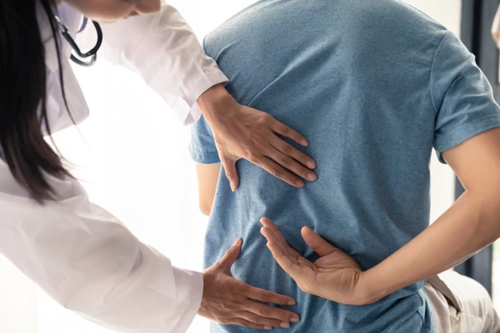Pain Research, Stem Cells / 12.12.2024
A New Era in Pain Relief How Stem Cell Therapy Alleviates Back Pain


Autologous stem cell therapy uses the patient's own cells, which are typically collected from areas rich in stem cells, such...
 According to the National Institutes of Health, at the core of skin thickness and texture restoration lies the process of cell proliferation and migration. The epidermis, the outermost layer of the skin, constantly undergoes renewal through a process known as epidermal turnover.
Stem cells within the basal layer of the epidermis divide and differentiate into keratinocytes. These gradually migrate upward to the skin's surface, replacing old, damaged cells.
According to Beyond CellCare, stem cell therapy differs from traditional treatments, which only target the symptoms of skin aging. By fostering cellular repair and renewal, it targets the fundamental mechanisms of aging.
Furthermore, certain skincare ingredients and treatments, such as chemical exfoliants and professional procedures like microdermabrasion and chemical peels, can accelerate cell turnover.
You’ll also find the use of exosome injection and similar therapy methods involving exosomes becoming popular in this regard. Exosomes facilitate skin cell proliferation and migration by transferring growth factors and signaling molecules.
(Please note that exosomes are currently not approved by the Food and Drug Administration (FDA) to treat or diagnose any disease).
(more…)
According to the National Institutes of Health, at the core of skin thickness and texture restoration lies the process of cell proliferation and migration. The epidermis, the outermost layer of the skin, constantly undergoes renewal through a process known as epidermal turnover.
Stem cells within the basal layer of the epidermis divide and differentiate into keratinocytes. These gradually migrate upward to the skin's surface, replacing old, damaged cells.
According to Beyond CellCare, stem cell therapy differs from traditional treatments, which only target the symptoms of skin aging. By fostering cellular repair and renewal, it targets the fundamental mechanisms of aging.
Furthermore, certain skincare ingredients and treatments, such as chemical exfoliants and professional procedures like microdermabrasion and chemical peels, can accelerate cell turnover.
You’ll also find the use of exosome injection and similar therapy methods involving exosomes becoming popular in this regard. Exosomes facilitate skin cell proliferation and migration by transferring growth factors and signaling molecules.
(Please note that exosomes are currently not approved by the Food and Drug Administration (FDA) to treat or diagnose any disease).
(more…)